9 Complete Guide to a Perfect Golf Swing: Techniques, Tips, and Drills for Every Golfer

Table of Contents
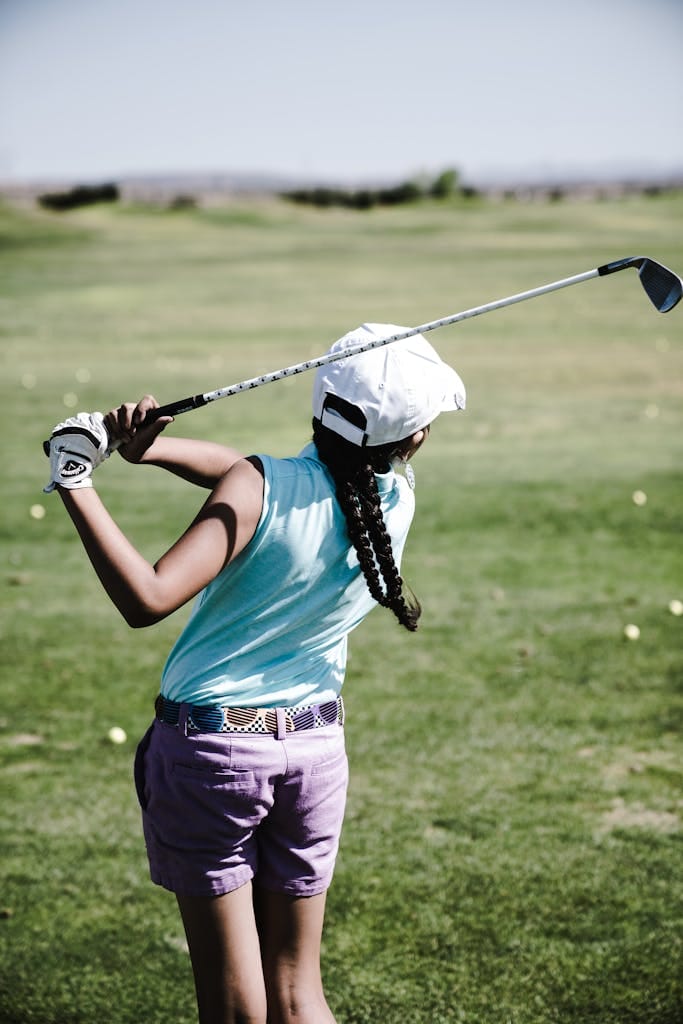
Key Takeaways
- We understand that no two golfer’s swings are alike. To get there, we must customize our approach. This is where the line is between sound mechanics and individualized feel, not an unattainable pursuit of a “perfect” model.
- Creating more of a consistent routine and setup with our swing is ultimately better than stressing about beautiful mechanics all the time. Drilling towards a more repeatable process builds our muscle memory and dependability during those crucial moments out on the course.
- A strong foundation begins with a proper setup, which includes correct grip, ideal stance width, proper alignment, and athletic posture to enable effective movement and shot accuracy.
- Breaking down the golf swing into manageable parts, focusing on smooth transitions, wrist action, rotation, and balanced finishes, helps us identify and practice the key elements that drive performance.
- With the help of 3D tech and bio-feedback tools, we can analyze and monitor our swing mechanics. Through focused practice, we hone our craft for ongoing development and tangible results.
- Both mental resilience and physical fitness are essential for sustained high-level performance over the long term. We need to retune our routines periodically, create a clear mental picture of what success looks like, and continually upgrade our equipment as we progress.
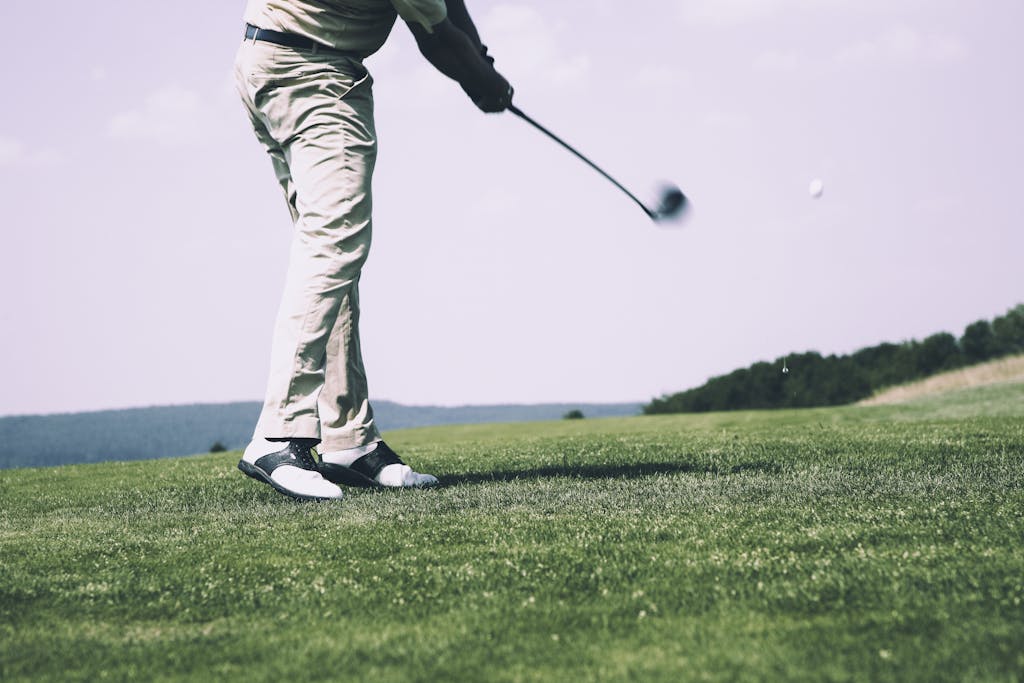
In order to finally learn how to perfect your golf swing, we’ll analyze each aspect of the motion—from grip and stance to follow-through. We focus on effective drills that immediately tell you if you’re getting better, like slow-motion videos or swing analyzers.
This way, we can quickly know what’s a success and what requires reworking. Right off the bat, our team examines the fundamentals—ball placement, club angle and hand path—then guides them to make minor adjustments that lead to major improvements.
Here, we get into the nitty-gritty for moving the ball forward, bit by bit.
What Makes a Great Swing?
Real, great golf swings develop from an understanding of our personal body, habits, and tendencies, along with effective golf swing techniques that feel good. Yet we observe professional golfers, and their swings are different, none resembling each other. Analyzing the swing uncovers a complicated mix of variables, including proper wrist position and clubface angle.
It’s not just one thing; rather, the grip, stance, balance, and our entire kinesthetic movement contribute to making a perfect golf swing. Our golf grip needs to be light—nothing more than the pressure of holding a baby bird. When in stance, our weight feels even throughout both feet, slightly shifted towards the balls, keeping us nimble and ready.
Our hips trigger the motion by rotating, but they don’t shift that far horizontally. Swing at 80 percent to maximize control and precision. This method stops you from trying to muscle the shot.
Forget One Perfect Model

We don’t have to imitate anyone’s aesthetic. In the end, each of us has our own perfect swing. Some of us like a quick tempo, some of us want it to slow down.
We try out other swings too, like open and closed stances. In finding what’s easy and feels smooth, we find out what works best for us. At the range, we pound 7- or 9-irons as far as we can to find our outer boundaries and expand them.
This allows us to create a great swing that is truly unique to us and not a copy of anyone else’s.
Consistency Over Pure Mechanics
We are rewarded by staying consistent over seeking ideal mechanics. Consistently swinging the same way leads to more quality shots than constantly adjusting to create some fantasy position.
We’ll practice drills—swinging with eyes closed or stopping at the top—to develop the muscle memory. The rule here is that the more we repeat, the more our body will learn, and the more our swing will become permanent.
Feel Versus Real in Swinging
What we might imagine a swing to be like versus what it actually is can be worlds apart. Video feedback is essential for us to align the feel with the reality of what we’re doing.
Filming our swings and interacting with the coaches helps us to adjust and make improvements. We don’t lose our creative instincts, but we remain open to changing course when constructive criticism indicates that’s the right move.
Master Your Golf Setup
In order to achieve our maximum potential golf swing, we have to begin with an appropriate setup. An incorrect or rushed setup often leads to compensations in the swing that can derail it from beginning to end. When you put attention toward grip, stance, alignment, ball position and posture it builds the foundation of great habits.
These tendencies set you up for a round of consistent play. It’s no wonder that we achieve the same shot shape and ball flight consistently over and over.
Grip the Club Correctly
That’s why we start with the grip. The lead hand creates the initial tone, gripping the club with the palm base laid on top and the fingers curled underneath. A confident, relaxed grip ensures that our arms are relaxed and our club can move at speed.
We explore the overlapping, interlocking, and 10-finger grips to discover what works best. Since each grip dramatically alters how the club feels and moves in your hands, you’ll find it useful to practice all three grips.
To ensure we have not squeezed too much, we can simply waggle the club and if it moves we have the proper grip.
Find Your Ideal Stance Width
Stance width varies by club. For example, with a driver, we use a much wider base, and yet with wedges, our feet almost touch. A nice athletic stance, roughly shoulder width for the majority of clubs, allows us to return with a good balance and create power with our core.
We experiment with this during practice, discovering whatever the secret is that helps us remain stable throughout the swing.
Set Proper Body Alignment For Swing
To achieve a smooth golf swing, we align our feet, hips, and shoulders parallel to the target direction. Utilizing sticks or clubs on the ground as guides helps ensure proper alignment. This single habit significantly improves our golf swing technique, aiding in consistently hitting the ball where we aim.
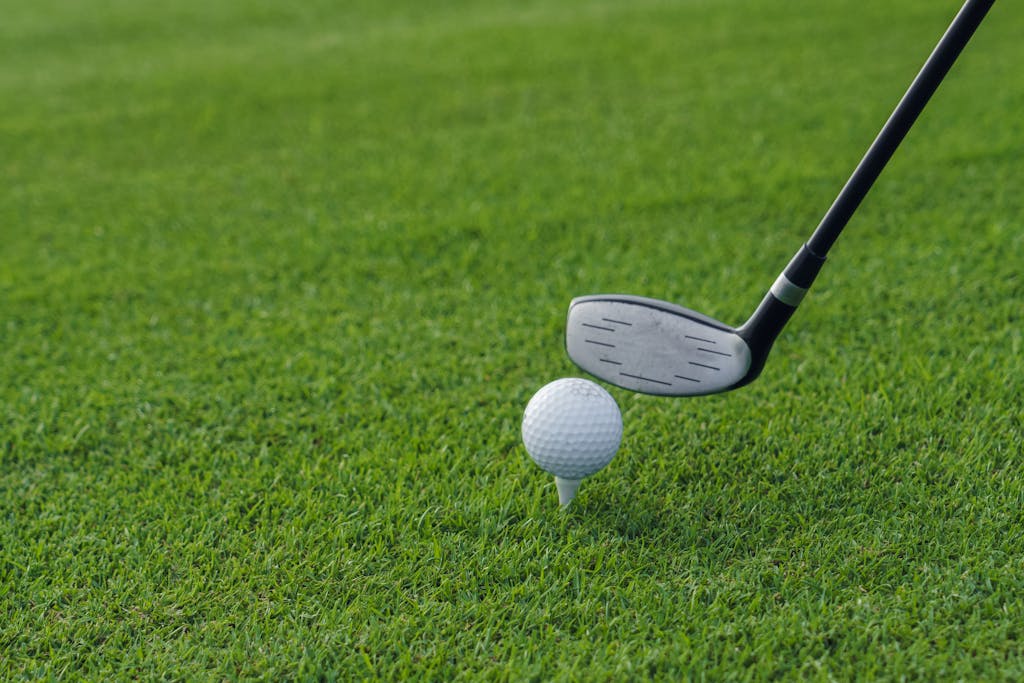
Position the Ball Consistently
Ball spot varies depending on the club. For drivers, it rests on the toe of the lead foot. For woods, it is towards the toe side of the face. For irons, it is more towards the centerline.
Maintaining this position identical for every club delivers consistent ball contact and shot shape.
Establish Athletic Golf Posture
We took our stance with athletic posture, back straight, knees flexed, and hips set back. Our bodyweight shifts to the balls of our feet. This athletic position allows us to clear efficiently, and in turn, allows us to maintain speed throughout the swing.
Biomechanically speaking, strong posture, maintained through the use of our core muscles, creates more explosive, efficient swings and powerful shots.
Execute Your Ideal Golf Swing
By analyzing the golf swing, we can identify the golf swing segments that create distinct and visible checkpoints for our improvements. We dedicated an hour a week, focusing on one aspect of the swing at a time—grip, stance or follow-through. Many of us prefer to work on one focus per session, but others prefer to work on a variety of drills for more variety.
The five keys—steady head, weight forward, inline impact, diagonal sweet spot path, and clubface control—show up from the start of the swing to the finish. Set-up, backswing, downswing and impact, and follow-through force focus on our practice schedule.
1. Start with a Smooth Takeaway
Our ideal golf swing begins with a smooth, controlled takeaway. We get the club away with the combination of our arms and shoulders. This slows down the motion and allows us to create the rhythm of the swing.
With twitchy motions at this level ruining the entire shot, we look for a smooth tempo every single time.
2. Control Your Backswing Sequence
A proper backswing incorporates the hips and shoulders rotating in unison, with the arms relaxed. During our swing, we often monitor our wrist angle to ensure the club face stays square.
This position sets us up for an efficient, strong, straight shot, which is our goal.
3. Optimize Your Wrist Action
Wrist hinge delivers ultimate clubhead speed. We practice keeping wrists firm but not stiff, letting us change shot shape and distance.
Changing wrist angles is how we hit low punch shots or high fades.
4. Nail the Downswing Transition
We often lose our balance due to the shift of weight from our back foot to our front instantly as we begin our golf swing technique. Maintaining our spine in the same position and timing the movement well is crucial for a smooth golf swing.
5. Rotate for Effortless Power
Our core and legs are what allow us to drive through the shot. A complete shoulder turn creates distance and power.
Rotational drills allow us to make things look effortless while maintaining power.
Boost Power and Hit Fairways For Swing
It all begins with a proper athletic setup to maximize distance and maintain accuracy. What stands underfoot provides a powerful answer. To increase power, we tap the earth beneath our feet. When we push off our back foot in the downswing, we send force up through our body and into the club. This change gives us the ability to swing much faster, which is one of the essential golf swing tips for beginners.
Performing ground reaction drills with focus, like plyometric jumps or plyometric step patterns, enables us to create this skill. We want to hear our legs load and spring as we pass through the shot. Understanding how to effectively compress the golf ball becomes a secret weapon for greater distance. That should translate into hitting the ball with the clubface square and the shaft leaning forward at impact, a key aspect of good golf swing mechanics.
When we do this correctly, the ball comes off the club strong and booming. We test a range of swing speeds and determine which one produces the optimal compression. The most energy-efficient impact location is a few inches below our front shoulder. It’s from here that we can carve down and then raise the ball up, enhancing our golf swing technique.
As far as accuracy goes, clean ball striking is paramount. Using impact tape or dry-erase markers, we can mark on the clubface to see where the ball impacts. If we notice scuffs in the center, we have some work to do. Drills that promote good contact, like hitting balls with your feet together, work to teach our balance and improve our wrist movement.
They keep us hitting the sweet spot—and doing it, day in and day out. Incorporating shaping shots gives you even more control. Every time we adjust our grip or stance to hit a draw or fade, we’re able to manipulate the shot shape and control the trajectory. This ensures we’ll stay out of danger and make strategic plays, leading to significant improvement in our game.
Fix Common Swing Problems
Everyone has these common swing faults that are hard to overcome. The positive takeaway from it is that we are able to easily tell them what they are doing wrong and set them on a path to making it better! The right drills, feedback, and a steady check-in on our progress set us up for solid, lasting gains on the course.
Here’s how we’ve learned to overcome the rough edges and squeeze more learning out of every cadre.
Identify Your Key Swing Faults
We film our personal swing and identify areas of improvement. Using a short video from a smartphone or camera we can review our movement in slow motion. It shows us where the wrist really needs to bend and how our center of weight moves across the action.
Often, we solicit the experience of a friend or local golf pro to observe and identify things we can’t see ourselves. This independent perspective is what makes the program so powerful, providing us with crucial, specific information to address.
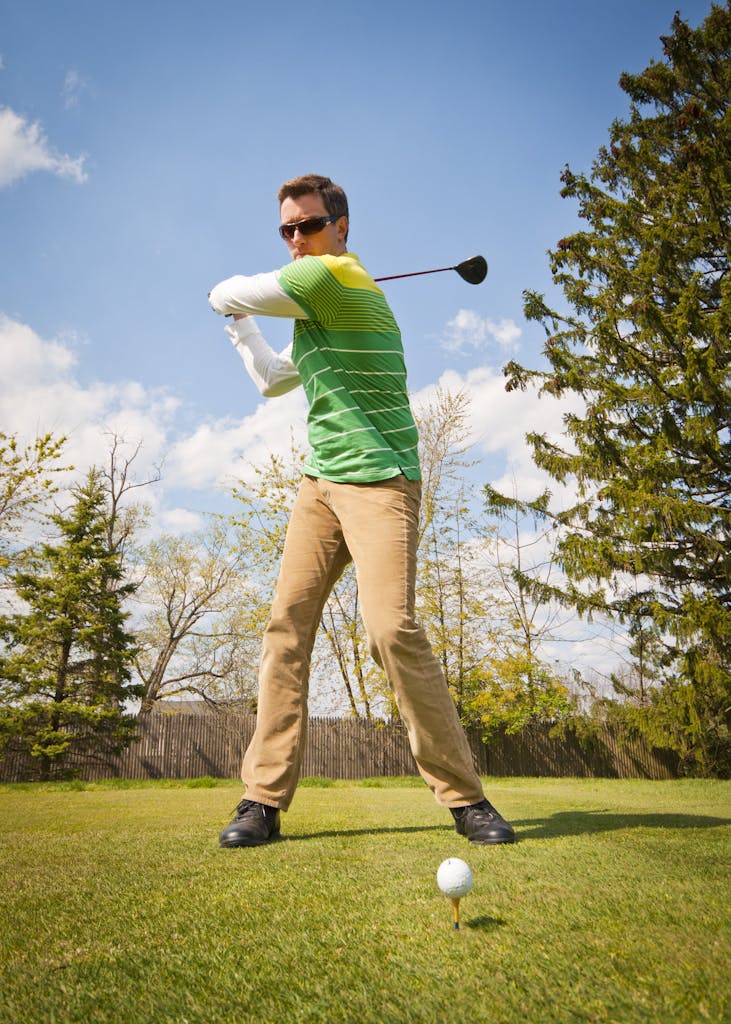
Stop Slicing or Hooking Shots
To prevent that nasty banana ball or shank, we adjust our grip. Even a slight grip adjustment can greatly improve the situation. For example, exposing additional knuckles on your lead hand changes the angle of the clubface.
Drills such as swinging with a headcover tucked under our lead armpit help our body work in conjunction with our arms to keep the club on the right path. We never lose focus on our stance, constantly looking at our feet and shoulders, ensuring that we’re squared up directly to the target.
Cure Fat and Thin Contact
In order to strike the ball correctly, our setup has to be correct. We have the ball in the optimum position. We start with our weight on the target side, move it onto the back side a bit, and then end up with the weight back on the target side at impact.
By utilizing feedback tools such as HackMotion, we can quickly find out whether or not we are achieving the appropriate wrist angles. Basic exercises such as doing a half swing or counting to “three” help establish proper muscle memory for crisp hits.
Debunk Persistent Swing Myths
We’re not here to let you linger on swing urban legends. Instead, we lean on proven moves like flaring our back foot about 20-25° to help our hips turn or using a 3:1 tempo count to keep timing steady.
Genuine collegial criticism and disseminating proven methodologies with one another takes all of us further, one pedal stroke at a time.
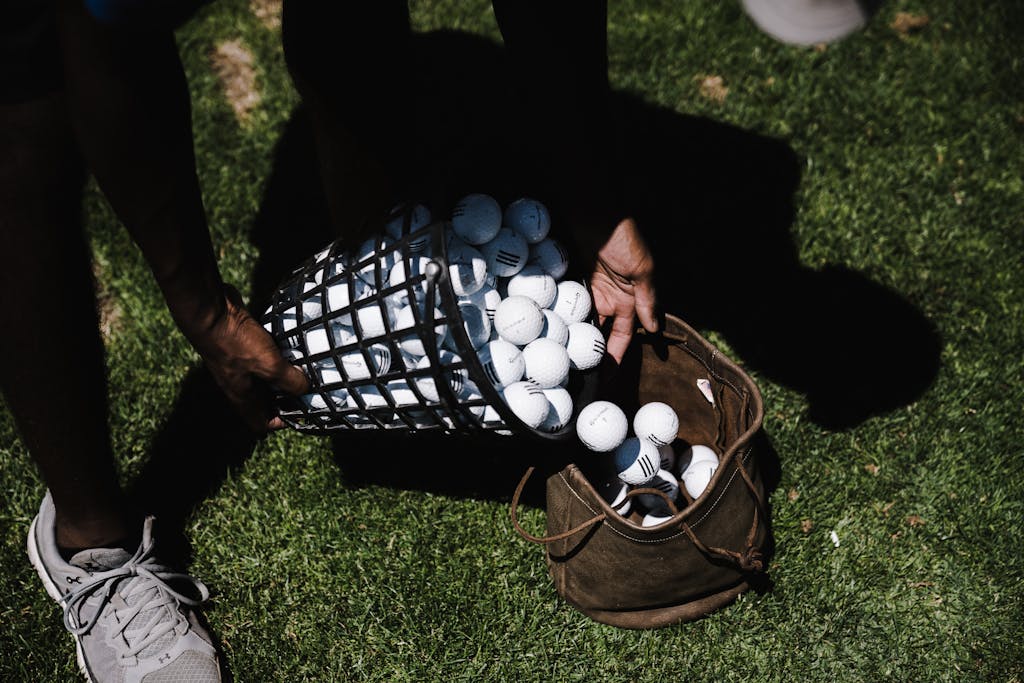
Practice Drills That Work
We understand that to improve our golf swing technique, we need targeted drills to correct minor inefficiencies and create positive muscle memory. Our beginner series begins with rhythm drills. Tempo exercises such as practicing with a metronome or steady song assist us in maintaining a consistent tempo, which is one of the most important golf swing tips for beginners.
When we swallow with sound, we notice how every stage of the action connects. This develops muscle memory and helps make our swing more rhythmic and less choppy. The Ladder Drill can be modified to work on your putting routine. We placed six balls at 10, 20, 30, 40, 50, and 60 feet away from the hole to practice our golf shots effectively.
Taking a full hit at every ball gives us buy-in to the speed. To work on swing plane, we’re using alignment sticks. It is only by laying them on the ground that we can truly chart our path forward. Colorful sticks keep us swinging on the correct path, reinforcing our golf swing mechanics.
We monitor improvement with drills such as the Line Drill or Two-Tee Drill for our driver. These indicate whether our course is heading in the right direction. Whether we hit the tees or miss the sticks, we’re now set up to understand the improvement we need to make in our swing technique.
Our impact position deepens with a drill such as the coin drill. We place a quarter behind the ball and try to make contact with the ball first, then hit the quarter. This drill ensures that we are delivering a sharp, precise strike with every blow, crucial for achieving a perfect golf swing.
Feedback tools, whether it’s swing analyzers or basic video, allow us to see these changes immediately. When we need precision, accuracy, discernment, and a quick draw, we employ the Clock Drill. We just put balls around the cup like a clock and challenge ourselves to make each one, honing our skills.
To be fair, the Gate Drill is pretty great as well. Two wooden parallel tees, just wider than our putter, ensure we stroke straight. We would make goals for each practice. For putting, the 3-6-9 Drill and Circle Drill serve as our foundation for good golf.
We’ve witnessed tangible improvement from tracking our shots and utilizing technology. With swing apps and analyzers to provide data, we can identify trends and target the areas with the most opportunity to improve first, leading to significant improvement in our game.
Strengthen Your Mind and Body
Making improvements to our golf swing goes beyond simply the driving range practice. When we weave mind and body work into our day to day, we create infrastructure for transformational change. Golf is as much a game of nerve as it is of skill, and that’s why both elements are important.
We notice less jittery camerawork and more fluid gameplay when we scrutinize the technicalities involved in each.
Build Mental Resilience On Course
We practice mindfulness to help center ourselves during these long rounds. Simple practices, like breath counting, become our anchors. By focusing on the sound/feel of the club, we’re still attached and missed shot after shot.
We consider stress—everyone under the sun understands that jittery hum right before an important putt on the back 9. Even as simple a technique as slow, deep breathing reduces our heart rate. After each round, we take a few minutes to remember what went well and celebrate our progress.
This sincere reflection fosters goodwill towards our game for another day.
Use Visualization for Success
Constructing a visualization provides our mind with a satellite view of the map. Leading up to every swing we have the ball flight playing out in real time and our perfect follow-through in our mind.
It’s a great habit we can implement on the warm up range or the golf course. With enough time, this molds our self-esteem and provides us with a mental picnic, replay button for challenging interactions.
Develop Golf-Specific Fitness
To this base, we supplement with moves that open and strengthen hips, shoulders, and core. Rotational stretches and twists assist with the powerful, spring-like coil we need in our swing.
We put an emphasis on drills that develop power in the lower back and legs, because strong base equals strong command. With these routines, we enhance our mobility and decrease the potential for injury.
Control Emotions During Rounds
We are very mindful of our mood while on the course. When that frustration escalates, we’re able to sense that and employ a brief break, sort of like pressing the reset switch.
We focus on our mental post-shot routine and adapt the next time around. This allows us to stay levelheaded on and off the field and it shines through in our play.
Choose the Right Equipment
Choosing the correct equipment is a major factor in improving our golf game. The equipment we choose should be suited to our body and our swing. This provides each shot with a new level of impact and constructive feedback to leave us feeling satisfied while out on the course.
We all want clubs that are comfortable and work the right way in our hands, and match our height, grip and swing speed. When we jam on equipment that complements our ability, our assurance increases. By making the right choices we can prevent distractions, maintain focus and stay cozy during all 18 holes.
Why Custom Club Fitting Helps
Custom club fitting isn’t just a fad or marketing gimmick. When we’re properly fit, we’re getting clubs built for the way we strike the ball. They consider factors like shaft flex, clubhead design, grip size, and lie angle.
This fine-tuning brings our swing to the next level. The better the fit, the straighter and more consistent shots will fly. Now that we have been improved, it’s worth taking a look at our clubs once more. Just like a jazz musician, our swing is continually changing, and that’s okay.
Quarterly meetings with our football fitter to make sure our equipment is a fit for our playing style.

Match Gear to Your Swing
Our individual swing style is extremely important when it comes time to select clubs. If we truly do swing faster, we should be playing stiffer shafts. The faster we swing, the better a more flexible shaft can improve our game.
Experimenting with different brands and styles allows us to get a better idea of what body and brain feels the best on what equipment. With easy tools, such as a smartphone or GoPro, we can review our form to ensure we’re doing it correctly.
Real results are displayed on launch monitors such as TrackMan, with most improving anywhere from 15-20% within a couple months. Choosing better equipment helps us enjoy the game more and improve our performance every time we step onto the course.
Build Lasting Consistency
As we approach the 2024 season, we understand lasting consistency in golf is built through habits that endure. It’s less about just going out there and hitting buckets of balls, more about making sure that we’re making great contact and understand what works for us.
We find control through work with shortened, lower-speed swings. These swings help us focus on the feel of our takeaway and downswing, so we build a swing that is ours. When we use drills that allow us to feel the movement, it becomes easier to replicate when it counts under pressure.
It requires patience, often three years or longer, to realize tangible transformation. We’ve learned that trusting our system matters just as much as the technique.
Create a Repeatable Pre-Shot Routine
We established a pre-shot routine that helps us remain relaxed before each swing. I still remember this routine because it has specific actions, checking our feet and club face alignment, picturing the shot you want, and taking a deep breath.
We need to practice this sequence of events before every shot, even on the practice range, so that it’s instinctual. In the long run, this practice allows us to be more present and prevents anxiety from rattling our composure.
Many of us go so far as to include a practice waggle or pause for effect.
Time Your Setup Process
We try to do the stage as simple and consistent as possible to keep it feeling loose. This simple three-point checklist—grip, stance, target—allows us to check all our fundamentals.
We rehearse timing our approach no less than we rehearse our swing. This helps maintain the fast pace on the course, which reduces anxiety and errors.
Adapt Swing to Course Conditions
We analyze the wind, ground, and pin spots prior to each shot. Similar adjustments are crucial; we don’t play shots the same way every time.
If grass is wet or the wind is up, we adjust our swing speed or ball flight. We employ tools such as swing analyzers to measure the impact these changes have on us.
Our flexibility allows us to maximize the benefit of every single round.
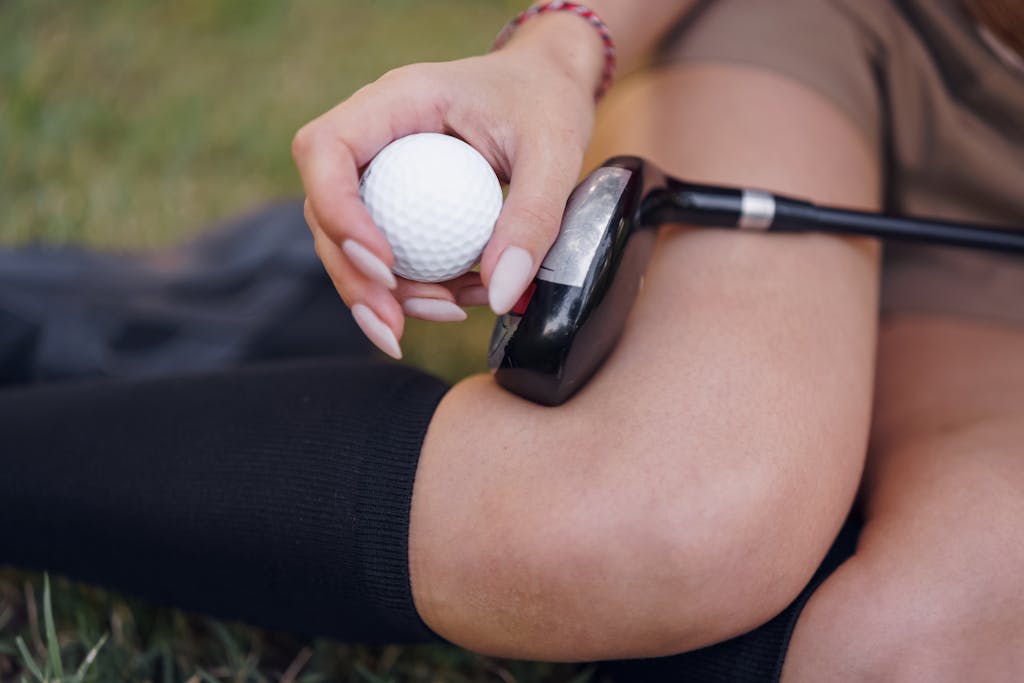
Conclusion
We designed a swing that’s comfortable, controlled and powerful. Our hands hold the club lightly with all the strength of a handshake. Our feet planted squarely. The club then moves back and through, perfectly straight as a laser. With every ball we hit, the effort we made is on display. Our practice became sharp, quick, fun. We intersperse it with short chips, long drives, and putts that fall in the hole. We keep our bodies relaxed and our minds uncluttered. Our clubs should fit us, not the other way around. Preventing a shaky swing We maintain our swing by playing it safe. That’s why golf feels simple, fresh, new, and groundbreaking no matter what round you start. Give Yourself the Advantage To dramatically improve your swing, visit the range regularly and share advice with your buddies. Here’s to continuing to hone our crafts and firing lower scores down the stretch.
Frequently Asked Questions
What is the most important part of a golf swing?
The most important thing is setup.
PrinciplesA balanced stance, grip and alignment provide the core of a strong and precise swing.
How do I add more power to my golf swing?
To achieve a smooth golf swing, aim to get your hips and shoulders to rotate simultaneously. Grip the club firmly yet without tension, transferring your weight from the back foot to the front foot during the downswing and through impact.
Why am I slicing the ball?
The two primary causes of a slice are an open clubface angle at impact or a swing path that’s too outside-in. For beginners, monitoring your golf grip is essential to ensure that your golf swing technique follows a straight line through ball impact.
How often should I practice to see improvement?
For significant improvement, combine range sessions with short-game work and effective golf swing tips to develop your fundamentals two or three times a week.
What equipment helps perfect my swing?
Clubs should reflect your height, strength, and skill level. When you’re getting fit for a new set of clubs, effective golf swing techniques and custom fittings can significantly enhance performance.
Can physical fitness improve my swing?
Yes. Flexibility, core strength, and balance are crucial for a good golf swing. Easy strength moves such as planks, stretching, and light weight training will improve your golf swing technique.
How do I stay consistent under pressure?
Create a pre-shot routine. Deep breaths, positive self-talk, and concentrating on your target will help calm any nerves and allow you to execute a smooth golf swing.
Golf Pro Tips participates in affiliate programs and earns commissions on qualifying purchases. See our Affiliate Disclosure.







One Comment